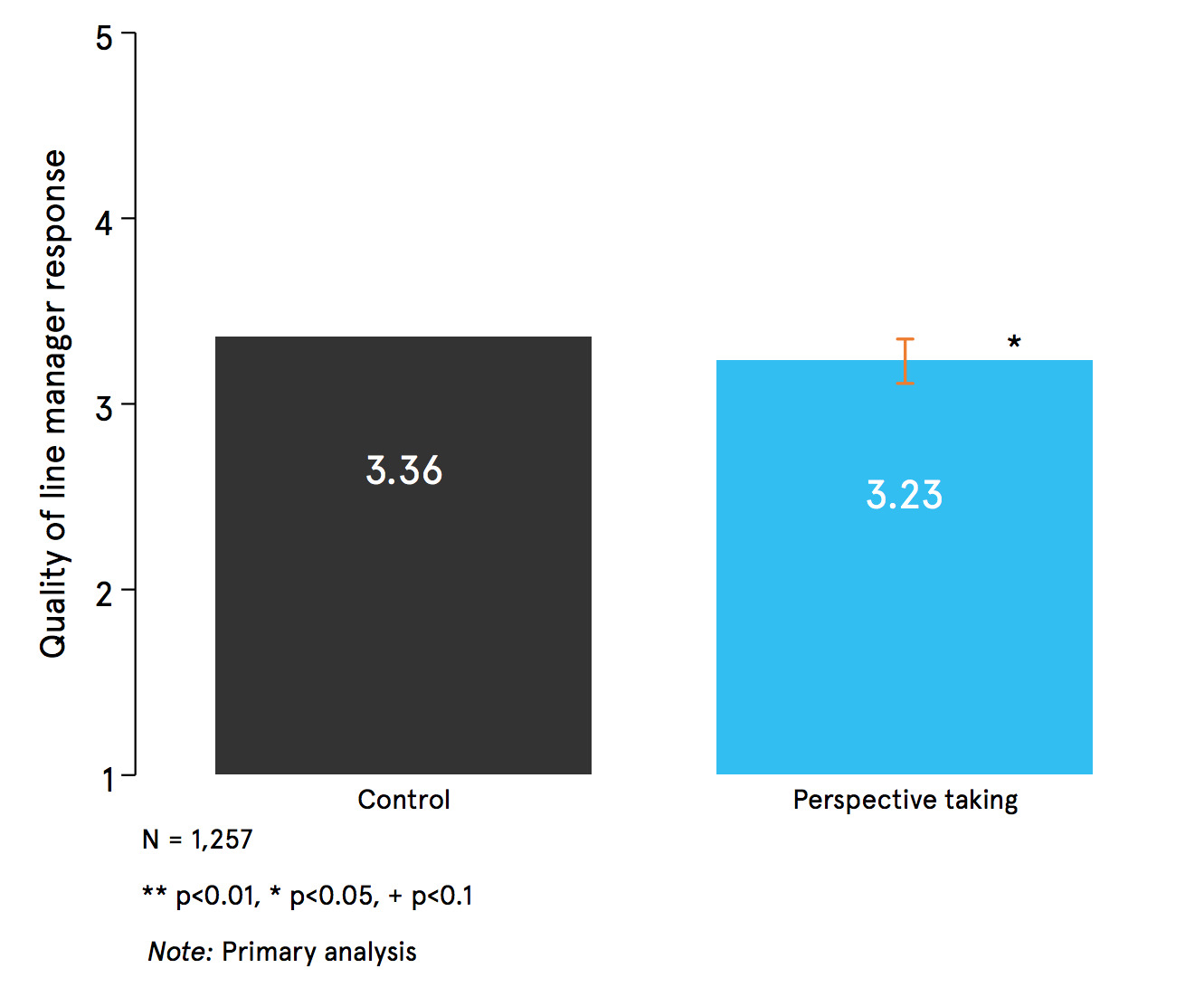The recent spotlight on sexual harassment in the workplace has led employers from Hollywood to Westminster to think about how they treat women. This, alongside the introduction of the new requirement for employers to report their Gender Pay Gap, means it is a good time to ask the question: what do we know about what works for creating more gender equal workplaces?
Changing behaviours to reduce discrimination and bias is tricky. Many of the things that organisations consider ‘best practice’ either don’t work or, at worst, backfire.
In their recent HBR article, Professors Frank Dobbin (Harvard) and Alexandra Kalev (Tel Aviv) show that diversity programmes such as mandatory diversity training and grievance processes are actually associated with a reduction in minority representation in management.
Testing the effectiveness of a perspective taking exercise on line managers
With conventional approaches to diversity brought into question, we partnered with the Equality and Human Rights Commission (EHRC) to identify and test a new, easy to implement, scalable intervention. The results were published by EHRC recently.
Our focus was on line managers, often identified as the key to employee engagement. In her book ‘What Works: Gender Equality by Design’, Professor Iris Bohnet (Harvard) identifies ‘perspective taking’ – focusing on what other people might be thinking or feeling – as a promising avenue for firms. This is backed by lab research showing that perspective taking can improve communication, reduce the tendency for stereotyping and prejudice, and increase empathy. While much of this work has looked mostly at ethnic diversity, we believe that this method could be used as effectively for gender. We wanted to build on this research and test perspective taking in a real world setting.
In a trial with a large police force, we tested a 15-minute online perspective taking exercise (including a planning exercise to put their ideas into action) that asked line managers – both male and female – to take a few minutes to imagine what a pregnant colleague might be thinking or feeling. We included 3,796 line managers who were either asked to complete the online exercise as well as a series of outcome measures some weeks later (in the intervention group) or just the outcome measures (in the control group). A total of 1257 line managers completed this process across the two groups.
The results were surprising.
We found that the line managers who had participated in the exercise were rated no better by their female staff six weeks later than line managers who had not received the intervention. Indeed, we found that when asked to respond to hypothetical line management situations, the line managers in the treatment group provided answers that were slightly worse than those of their peers who had not received the intervention. These findings were similar regardless of the line managers’ gender.

These results are interesting because they show how difficult it can be to shift behaviours that are associated with gender stereotypes and norms. The result may be due to a problem specific to our intervention: perspective taking does not always equal perspective ‘getting’. In other words, even when we try to adopt another person’s perspective, we can fail if we do not actually understand how they think and feel. Other practical factors that could have led to the result are a lack of concrete tools for managers to change their behaviour, as well as a masculine workplace culture in the organisation where we trialled the intervention.
The negative effect can be also due to other factors which explain why diversity and unconscious bias interventions – especially when delivered online – have an inconsistent track record. These include stereotype activation (the intervention activates rather than eliminates stereotypes), moral licensing (people can feel entitled to engage in a negative behaviour towards a minority group after having done something positive) or defensiveness (triggered if people feel accused or threatened).
The future of diversity interventions
The main lesson from our trial is the need to continue rigorously testing which interventions work and which do not, including any unintended effects they may have. Testing will also help identify whether backfiring effects are more common in certain contexts (such as male and highly hierarchical workforces). Together, this will help companies know how they should be spending their diversity budgets to get the best results.
We will be working with the Government Equalities Office to understand how organisations can reduce their gender pay gap and increase the number of women in leadership positions. If you’re an employer interested in testing changes for example to your promotion or pay and reward process, get in touch: tiina.likki@bi.team

